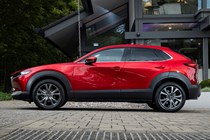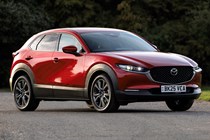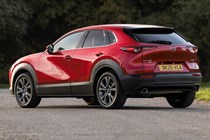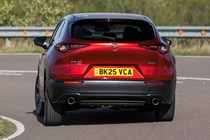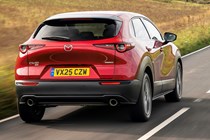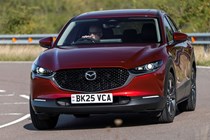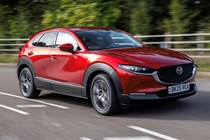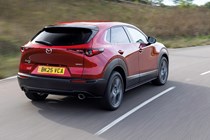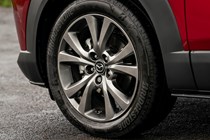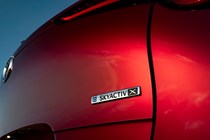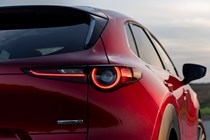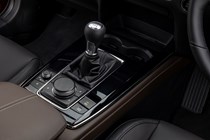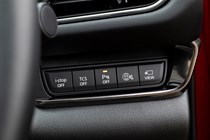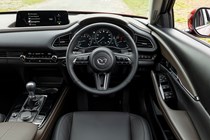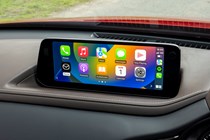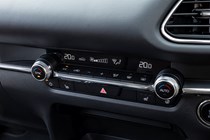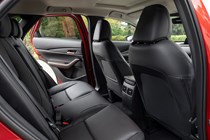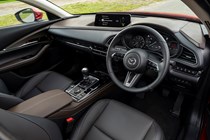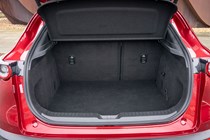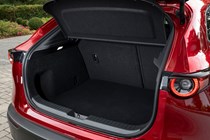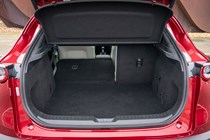
Mazda CX-30 running costs and reliability
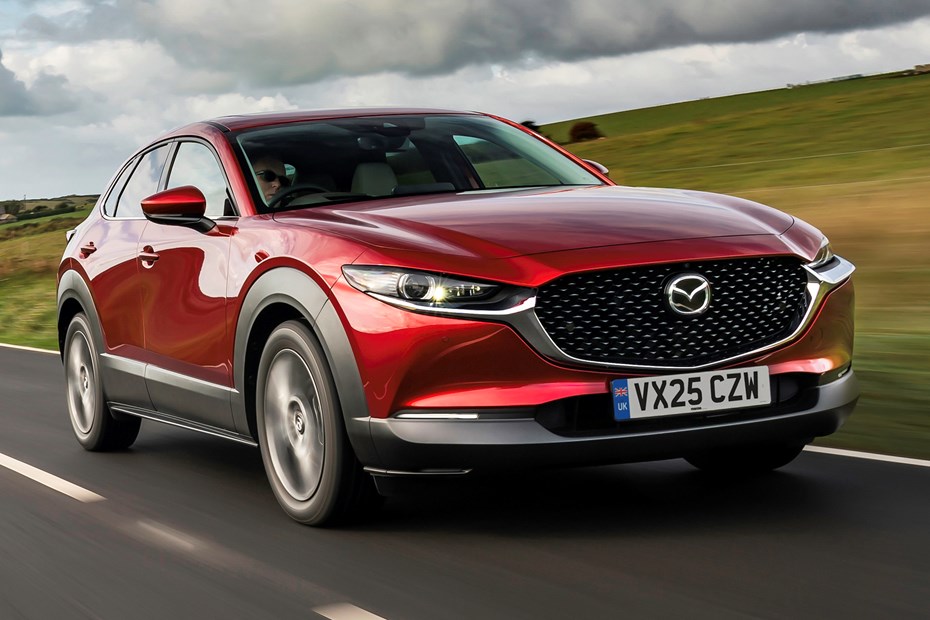
Miles per pound (mpp) ⓘ
| Petrol engines | 5.9 - 7.4 mpp |
|---|
Fuel economy ⓘ
| Petrol engines | 40.4 - 50.4 mpg |
|---|
- No diesel engines
- Both petrols have mild-hybrid tech
- SkyActiv-X has advanced fuel-saving technology
How much does it cost to run?
Big news: there’s no plug-in hybrid on offer here. That means the most economical engine on offer is the front-wheel drive SkyActiv-X. It’s the more powerful of the two choices, and is also the cleanest. Both engines have stop-start and a mild hybrid system attached. This results in very competitive fuel consumption and the cleanest model delivers a fairly impressive 129g/km, which isn’t bad for a car of this size.
While the new SkyActiv-G is more or less a regular petrol engine that’s larger than average with cylinder cut-off technology, the SkyActiv-X is more interesting. As detailed in the engines section of the review, it uses compression ignition technology to work more efficiently than a regular spark ignition petrol.
You might think that the large 2.0-litre engine of the CX-30, even with fuel-saving tech, uses more petrol than the dinky 1.0- to 1.5-litre engines employed by most of its rivals. That’s not true. Mazda’s been able to deliver impressive fuel economy in line with its turbocharged rivals. We found a real-world 48mpg easily achievable from the SkyActiv-G, while the SkyActiv-X hovered around the 44mpg mark.
Servicing and warranty
Service intervals are 12,500 miles or 12 months, whichever comes first.
There’s a three-year, 60,000 mile warranty as standard. Not as impressive as five- and seven year offerings from its Japanese and Korean rivals.
How reliable is it?
- Mazda has a good reputation
- But there’s lots of new tech
- Three-year warranty as standard
The CX-30 shares the majority of its mechanical components with the Mazda 3 hatchback, although Parkers readers have complained about overall reliability in their reviews. The main issues reported are problems with the driver assistance systems, such as false positives that would invoke the emergency braking for no reason. We’ve also heard of the tailgate opening randomly and the mirror folding packing up.
There was one recall in 2021 relating to the powered tailgate partially lowering when fully open, affecting just over 7,100 vehicles and updating the software. Along with the reported electrical gremlins, this is disappointing as Mazda has an otherwise good reputation for building strong and dependable cars.
Ongoing running costs
| Road tax | £195 |
|---|---|
| Insurance group | 12 - 21 |
Get an insurance quote with

|
|



